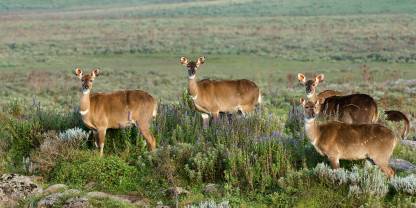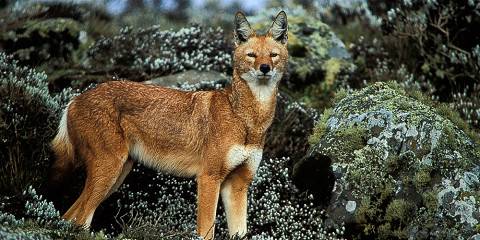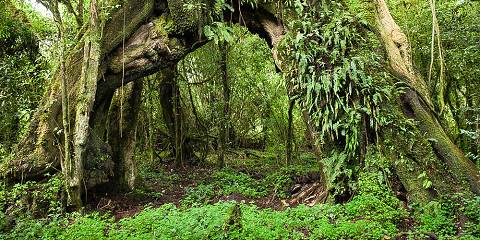The Sanetti Plateau in Bale Mountains National Park, located at 4,000m/13,123ft altitude, protects the world’s largest tract of Afro-alpine moorland. Surprisingly, you won’t have to climb a mountain to experience this otherworldly environment. Instead, you’re able to drive up on the world’s highest all-weather road. Keep an eye out for the endemic Ethiopian wolf trotting around looking for the giant mole-rats on which it preys.

-
Best Time To Go
- November to February (Little rain)
-
High Season
- October to January (Park is never busy)
-
Size
- 412km² / 159mi²
-
Altitude
-
1,462-4,288m /4,797-14,068ft
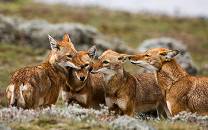 View Photos
View Photos
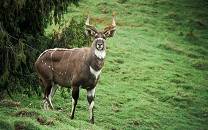 View Photos
+24
Photos
View Photos
+24
Photos
Pros & Cons
- Spectacular mountain setting
- Great hiking opportunities
- Rare high-altitude mountain habitat
- Home to several Ethiopian endemics
- Excellent birding with many endemics
- Limited accommodation options
- Sections of the park are spread out and hard to cover from one base
Wildlife
Bale Mountains NP is the best place in the country to see a good range of endemic mammals and birds. Although highly endangered, the Ethiopian wolf is remarkably easy to spot. Their social nature is best appreciated when you see them regroup at a den site. Mountain nyala and Menelik's bushbuck are endemic antelope you can expect to see on a guided hike from Dinsho Headquarters.
More about Bale Mountains’s wildlifeScenery
Bale Mountains NP protects several different habitats. Most spectacular is the vast, 250km²/97mi², high-altitude Sanetti Plateau, covered in heath and dotted with giant lobelia plants. South of the plateau, the Harenna escarpment offers never-ending views before the road drops down to the mysterious cloud forest with its trees draped in old man’s beard (plants with a white feather-like appearance) shrouded in mist. The most accessible section of the park, at Dinsho Headquarters, protects a beautiful juniper-hagenia woodland.
Weather & Climate
The weather in Bale Mountains NP is generally wet and mild. It rains regularly in the Wet season from April to October, but the Dry season, from November to March, only sees sporadic rain. Days see temperatures of about 18°C/64°F, but nights are generally cold and frost is not unusual.
More about the weather and climateBest Time To Visit
November to February is generally considered the best time to visit Bale Mountains NP. This is the Dry season and conditions are ideal for hiking. Traveling in the Wet season months can be a bit more of an adventure as downpours can interrupt activities. Lush vegetation, clear views and wildflowers are characteristic of this time.
More about the best time to visit
